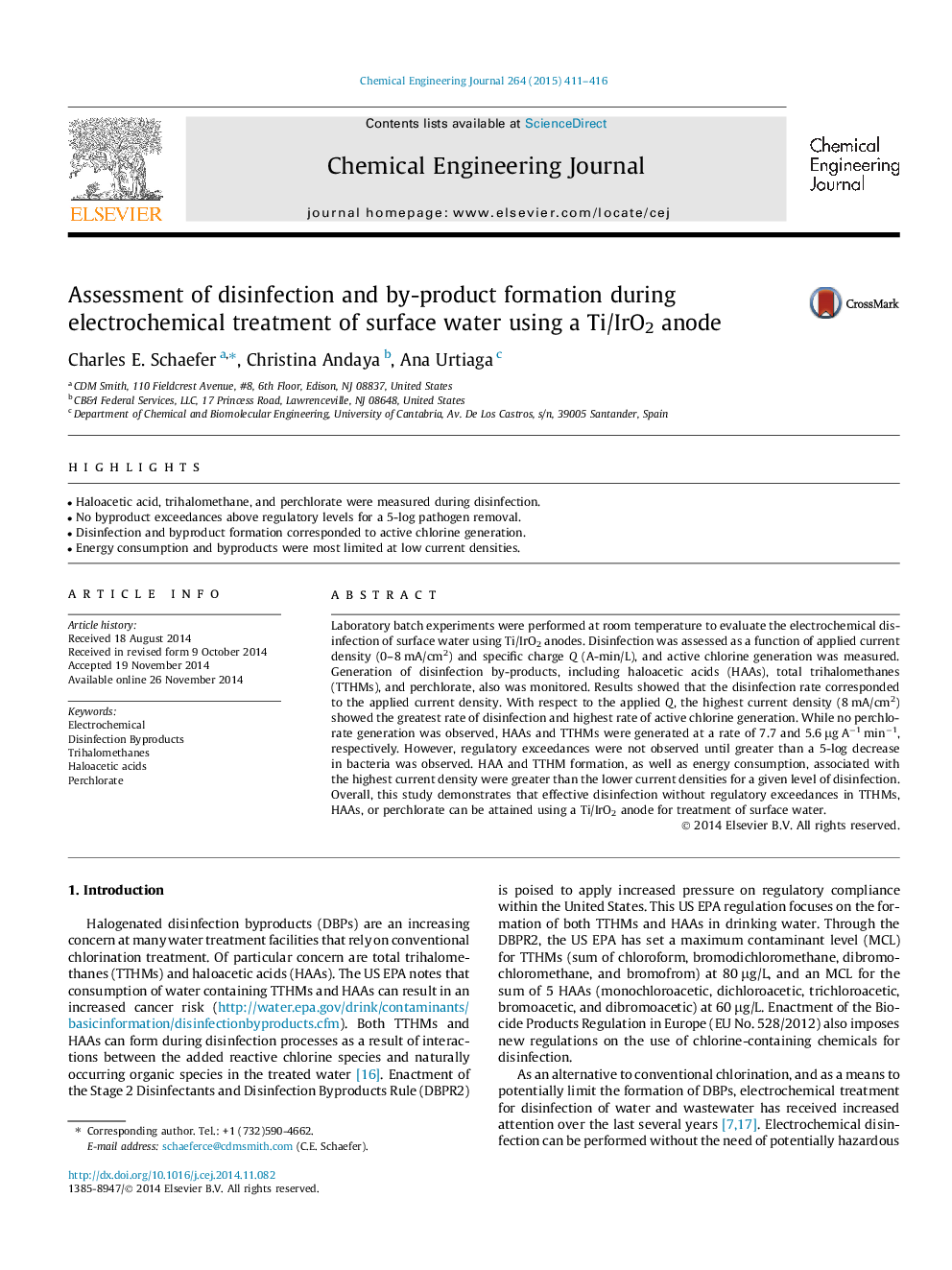| Article ID | Journal | Published Year | Pages | File Type |
|---|---|---|---|---|
| 146849 | Chemical Engineering Journal | 2015 | 6 Pages |
•Haloacetic acid, trihalomethane, and perchlorate were measured during disinfection.•No byproduct exceedances above regulatory levels for a 5-log pathogen removal.•Disinfection and byproduct formation corresponded to active chlorine generation.•Energy consumption and byproducts were most limited at low current densities.
Laboratory batch experiments were performed at room temperature to evaluate the electrochemical disinfection of surface water using Ti/IrO2 anodes. Disinfection was assessed as a function of applied current density (0–8 mA/cm2) and specific charge Q (A-min/L), and active chlorine generation was measured. Generation of disinfection by-products, including haloacetic acids (HAAs), total trihalomethanes (TTHMs), and perchlorate, also was monitored. Results showed that the disinfection rate corresponded to the applied current density. With respect to the applied Q, the highest current density (8 mA/cm2) showed the greatest rate of disinfection and highest rate of active chlorine generation. While no perchlorate generation was observed, HAAs and TTHMs were generated at a rate of 7.7 and 5.6 μg A−1 min−1, respectively. However, regulatory exceedances were not observed until greater than a 5-log decrease in bacteria was observed. HAA and TTHM formation, as well as energy consumption, associated with the highest current density were greater than the lower current densities for a given level of disinfection. Overall, this study demonstrates that effective disinfection without regulatory exceedances in TTHMs, HAAs, or perchlorate can be attained using a Ti/IrO2 anode for treatment of surface water.
